Czechia
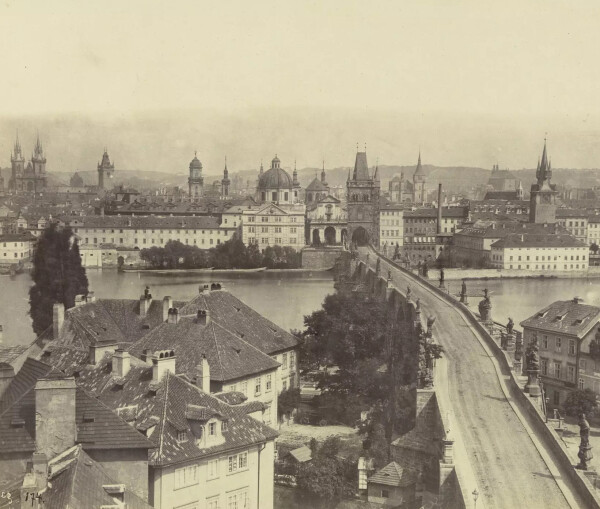
Old Town of Prague photographed by Andreas Groll, around 1851-1872, Wien Museum
© Wien Museum
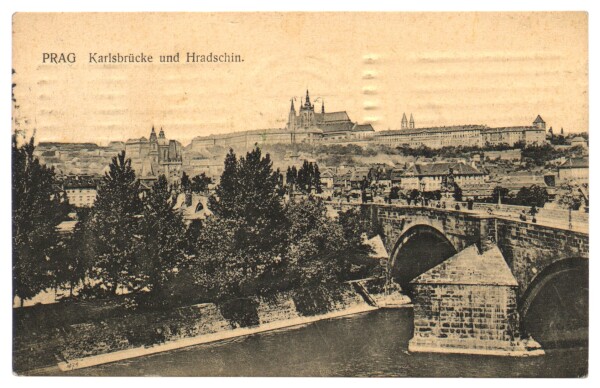
Gustav Klimt: Picture Postcard from Gustav Klimt in Prague to Anna Klimt in Vienna, 05/01/1909, The Albertina Museum
© The ALBERTINA Museum, Vienna
Gustav Klimt’s known surviving correspondence is proof that the artist sojourned in Czechia – Bohemia and Moravia at the time of the monarchy – several times for private or professional reasons. Among other things, he visited the families Bloch-Bauer and Primavesi at their country estates.
Greetings from Prague (1895 and 1896)
In November 1895, Gustav Klimt was in Prague, where he was a jury member in a competition organized by the Society for the Promotion of German Science, Art and Literature in Bohemia. This is evidenced by a letter from the painter to Emilie Flöge alias Emilie Nickl, which is now privately owned. It is so far the first known piece of correspondence from the painter to his intimate confidante. The letter itself contains a detailed account of the city, which he found “truly beautiful,” and his strenuous jury duties. At the same time, it also demonstrates the strong bond between Klimt and Emilie Flöge already budding at the time. The artist ended a letter with the words:
“Good-bye, my darling, I’m kissing you affectionately in my mind and look forward with all my heart to seeing you again.”
In May of the following year, Gustav Klimt wrote another personal letter to Emilie Flöge – his “Schönmidi” [“beautiful girl”] – from Prague. According to his message, the painter had traveled there by train and stayed for a few days to attend an unspecified meeting, which was also attended by the Austrian painter Andreas Groll, a professor at the Vienna School of Arts and Crafts.
A Day in Prague (1909)
Gustav Klimt returned to Prague on 1 May 1909. He wrote to his mother Anna and to Emilie Flöge to let them know that he had arrived there safely. He sent more postcards to Emilie Flöge and then traveled back on the same day. The reason for this journey is unknown.
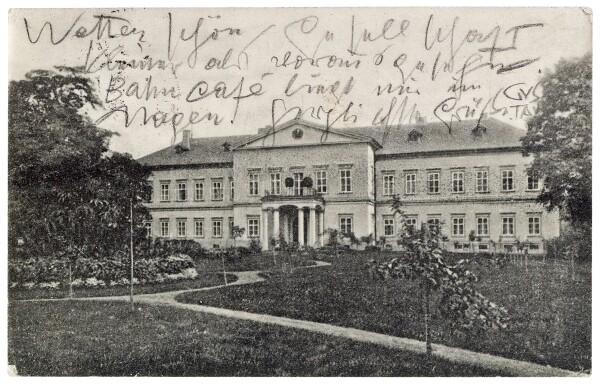
Gustav Klimt: Picture postcard from Gustav Klimt in Wodolka to Emilie Flöge in Semmering, 11/15/1912, Leopold Privatsammlung
© Leopold Museum, Vienna
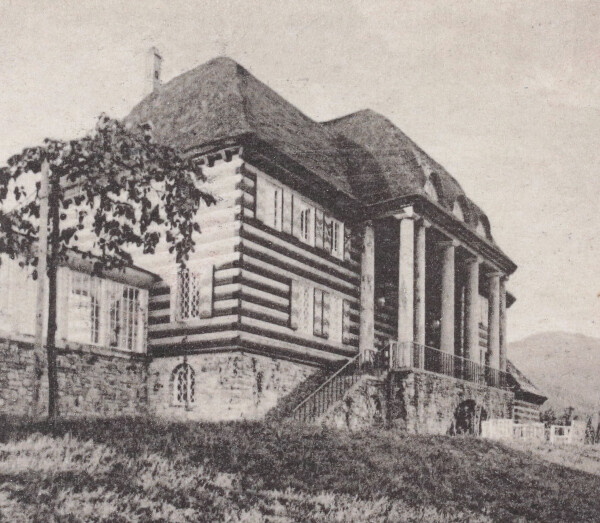
Country house Otto Primavesi in Winkelsdorf, Klimt Foundation, Vienna
© Klimt Foundation, Vienna
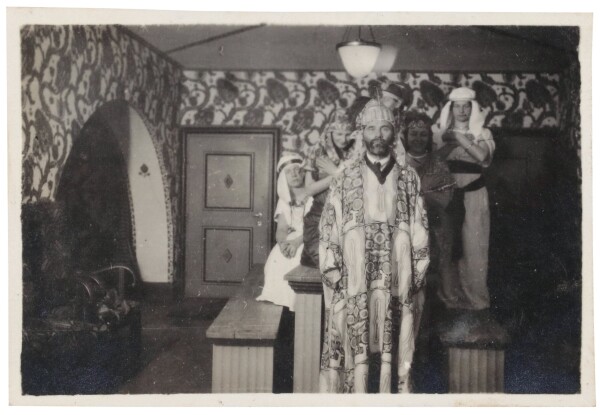
Gustav Klimt at a costume party in the cellar of the Primavesi family's country house in Winkelsdorf, presumably 12/30/1917-01/03/1918, Klimt Foundation
© Klimt Foundation, Vienna
Visiting the Bloch-Bauers (1911 and 1912)
In September 1911, Gustav Klimt visited his patrons, the industrialist Bloch-Bauer and his wife, for a few days at their country estate Jungfern-Brezan near Prague (now Odolena Voda, Czech Republic). The painter took part in a hunting party. A year later, Gustav Klimt, who was working on Portrait of Adele Bloch-Bauer II (1912, private collection) at the time, stayed at the Bloch-Bauer family’s estate in Bohemia once again. According to his message to Emilie Flöge dated 15 November 1912, a small social gathering took place there.
Documented Stays at Winkelsdorf (1915–1917)
Like Josef Hoffman and Anton Hanak, Gustav Klimt was also a close friend of the patrons Otto and Eugenia Primavesi, who purchased several of his works and also commissioned several portraits from him. In the 1910s, during World War I, the painter often visited them at Winkelsdorf in Moravia, occasionally in the company of Emilie Flöge. The Primavesi family owned a country house there, which had been built around 1914 based on Josef Hoffmann’s plans. During this period, several photographs were taken there showing Gustav Klimt in company of other guests at one of the legendary fancy dress parties taking place there on a regular basis. The earliest postal evidence of a brief visit there together with Josef Hoffmann dates from December 1915, when Gustav Klimt wrote to Emilie Flöge on 10 December:
“Arrival at 8 o’ clock in the evening – Winkelsdorf – exhausted and healthy! Went to bed late – got up early. Lousy weather today – gloomy – dark and rainy. Tasty meat with horseradish for lunch – apple and kraut strudel – probably fried sausages in the evening – black pudding and liverwurst tomorrow, etc. – crazy!”
In January 1917, Gustav Klimt stayed at Winkelsdorf again for a longer period of time. In his known messages to Emilie Flöge from this period, the painter complained above all about his physical discomfort of the previous days, which had been caused, among other things, by a hiking tour in deep snow over several hours:
“I didn’t feel like writing on the first day – I was too ‘mis.’ Demoralized, crushed, bruised – afflicted with all ills of discomfort! Have felt well again since yesterday (Friday) – the lump opened up by itself, but is still a mighty bulge, and I have a burn, a thick “crust,” on the head as well – all of it very pretty […].”
At the turn of the year 1917/18 – a few months before his death – Gustav Klimt was a guest at the Primavesi family‘s country house for the last time. It was from there that he wrote his last known message – New Year’s greetings – to his soulmate Emilie Flöge.
Literature and sources
- Claudia Klein-Primavesi: Die Familie Primavesi und die Künstler Hanak, Hoffmann, Klimt. 100 Jahre Wiener Werkstätte, Vienna 2004.
- N.N., O. K.: Großindustrieller Otto Primavesi gestorben. Ein Förderer österreichischer Kunst und Künstler, in: Neues Wiener Journal, 10.02.1926, S. 4-5.
- Sandra Tretter, Peter Weinhäupl (Hg.): Chiffre: Sehnsucht – 25. Gustav Klimts Korrespondenz an Maria Ucicka 1899–1916, Vienna 2014.
- Sandra Tretter, Peter Weinhäupl (Hg.): Gustav Klimt. Emilie Flöge. Reform der Mode. Inspiration der Kunst, Vienna 2016, S. 13.
- Agnes Husslein-Arco, Alfred Weidinger (Hg.): Gustav Klimt 150 Jahre, Ausst.-Kat., Upper Belvedere (Vienna), 13.07.2012–27.01.2013, Vienna 2012.
- Tobias G. Natter, Franz Smola, Peter Weinhäupl (Hg.): Klimt persönlich. Bilder – Briefe – Einblicke, Ausst.-Kat., Leopold Museum (Vienna), 24.02.2012–27.08.2012, Vienna 2012.
- Tobias G. Natter (Hg.): Gustav Klimt. Sämtliche Gemälde, Vienna 2012.
- Christian M. Nebehay: Gustav Klimt. Sein Leben nach zeitgenössischen Berichten und Quellen, Vienna 1969.
- Agnes Husslein-Arco, Alfred Weidinger (Hg.): Gustav Klimt – Josef Hoffmann. Pioniere der Moderne, Ausst.-Kat., Lower Belvedere (Vienna) - Upper Belvedere (Vienna), 25.10.2011–04.03.2012, Munich 2011, S. 30.

